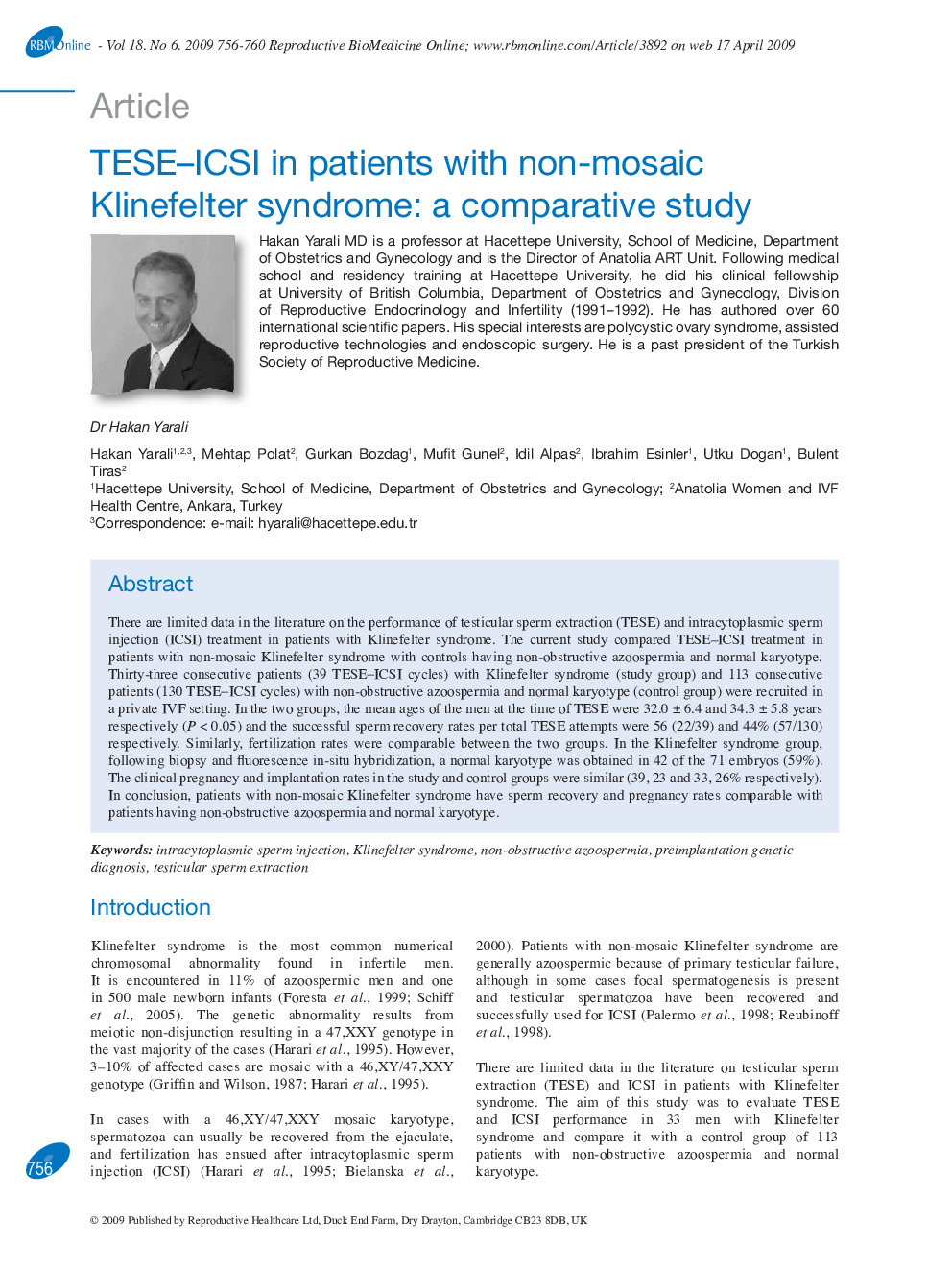| Article ID | Journal | Published Year | Pages | File Type |
|---|---|---|---|---|
| 3971949 | Reproductive BioMedicine Online | 2009 | 5 Pages |
There are limited data in the literature on the performance of testicular sperm extraction (TESE) and intracytoplasmic sperm injection (ICSI) treatment in patients with Klinefelter syndrome. The current study compared TESE–ICSI treatment in patients with non-mosaic Klinefelter syndrome with controls having non-obstructive azoospermia and normal karyotype. Thirty-three consecutive patients (39 TESE-ICSI cycles) with Klinefelter syndrome (study group) and 113 consecutive patients (130 TESE-ICSI cycles) with non-obstructive azoospermia and normal karyotype (control group) were recruited in a private IVF setting. In the two groups, the mean ages of the men at the time of TESE were 32.0 ± 6.4 and 34.3 ± 5.8 years respectively (P < 0.05) and the successful sperm recovery rates per total TESE attempts were 56 (22/39) and 44% (57/130) respectively. Similarly, fertilization rates were comparable between the two groups. In the Klinefelter syndrome group, following biopsy and fluorescence in-situhybridization, a normal karyotype was obtained in 42 of the 71 embryos (59%). The clinical pregnancy and implantation rates in the study and control groups were similar (39, 23 and 33, 26% respectively). In conclusion, patients with non-mosaic Klinefelter syndrome have sperm recovery and pregnancy rates comparable with patients having non-obstructive azoospermia and normal karyotype.
